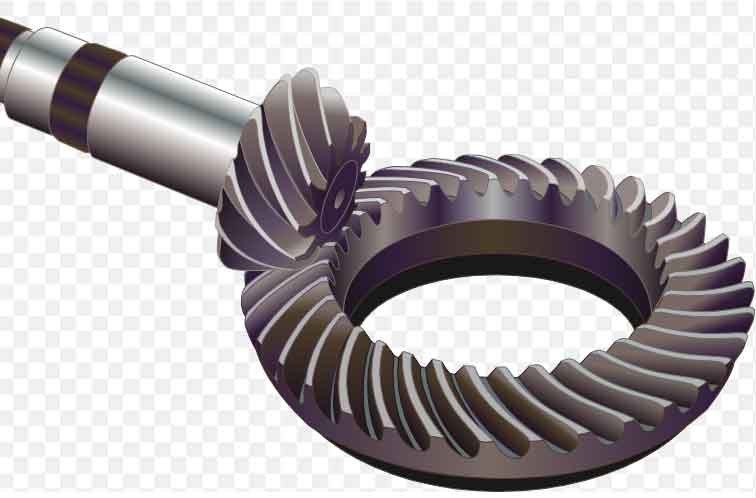Spiral bevel gears have several advantages and advancements that make them highly desirable in various applications. Let’s explore some of their key advantages and the advancements in spiral bevel gear technology:

Advantages of Spiral Bevel Gears:
- High Efficiency: Spiral bevel gears offer high efficiency in power transmission due to their curved tooth profile. The gradual tooth engagement reduces friction and allows for smooth motion, resulting in efficient torque transfer.
- Precise Motion Control: The curved tooth profile of spiral bevel gears enables precise motion control with minimal backlash. This makes them suitable for applications that require accurate positioning and smooth operation.
- Quiet Operation: The gradual tooth engagement and smooth motion of spiral bevel gears contribute to reduced noise and vibration. This is particularly advantageous in applications where quiet operation is essential, such as in precision machinery and noise-sensitive environments.
- High Torque Transmission: The curved tooth profile of spiral bevel gears provides a larger contact area, allowing them to handle high torque transmission. This makes them suitable for applications that require heavy-duty power transmission.
- Axial Load Capacity: Spiral bevel gears have a higher axial load capacity compared to straight bevel gears. The spiral tooth design helps to offset axial thrust, making them more capable of withstanding radial and axial loads.
- Versatile Mounting Configurations: Spiral bevel gears can be designed for various mounting configurations, including 90-degree intersecting shafts, non-orthogonal shafts, and non-coplanar shafts. This provides flexibility in adapting to different equipment designs and requirements.
Advancements in Spiral Bevel Gear Technology:
- Manufacturing Techniques: Advanced manufacturing techniques, such as CNC machining and precision grinding, enable the production of spiral bevel gears with high accuracy and surface finish. This ensures the gears meet the stringent requirements of modern applications.
- Computer-Aided Design (CAD) and Computer-Aided Manufacturing (CAM): The use of CAD and CAM software allows for precise modeling, simulation, and optimization of spiral bevel gear designs. It enables engineers to analyze gear performance, tooth contact patterns, and optimize gear geometry for improved efficiency and durability.
- Material Advancements: Advancements in materials, including high-strength alloys and heat treatment processes, enhance the strength, durability, and wear resistance of spiral bevel gears. This allows them to withstand demanding operating conditions and extend their service life.
- Lubrication and Surface Coatings: Innovations in lubrication and surface coating technologies improve the performance and reliability of spiral bevel gears. Advanced lubricants and coatings reduce friction, wear, and the risk of surface damage, leading to smoother operation and increased gear life.
- Computational Analysis and Finite Element Method (FEM): Computational analysis techniques, such as Finite Element Method (FEM), enable engineers to perform detailed stress analysis and optimize the design of spiral bevel gears. This results in gears with enhanced strength, load-carrying capacity, and reduced risk of failure.
These advancements in spiral bevel gear technology contribute to improved performance, durability, and efficiency of gear systems. Engineers can leverage these advancements to design and manufacture spiral bevel gears that meet the demanding requirements of modern applications, ensuring reliable and precise motion control in various industries.
